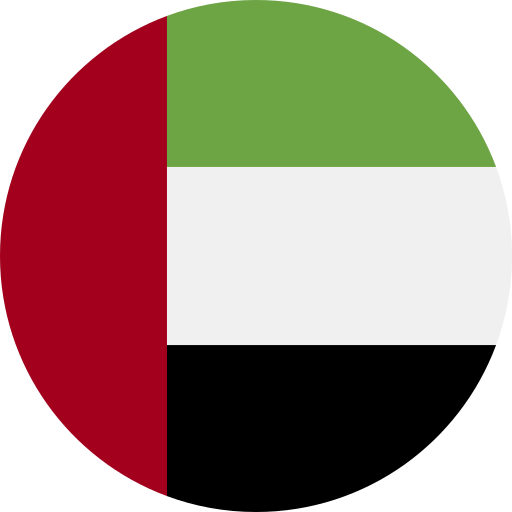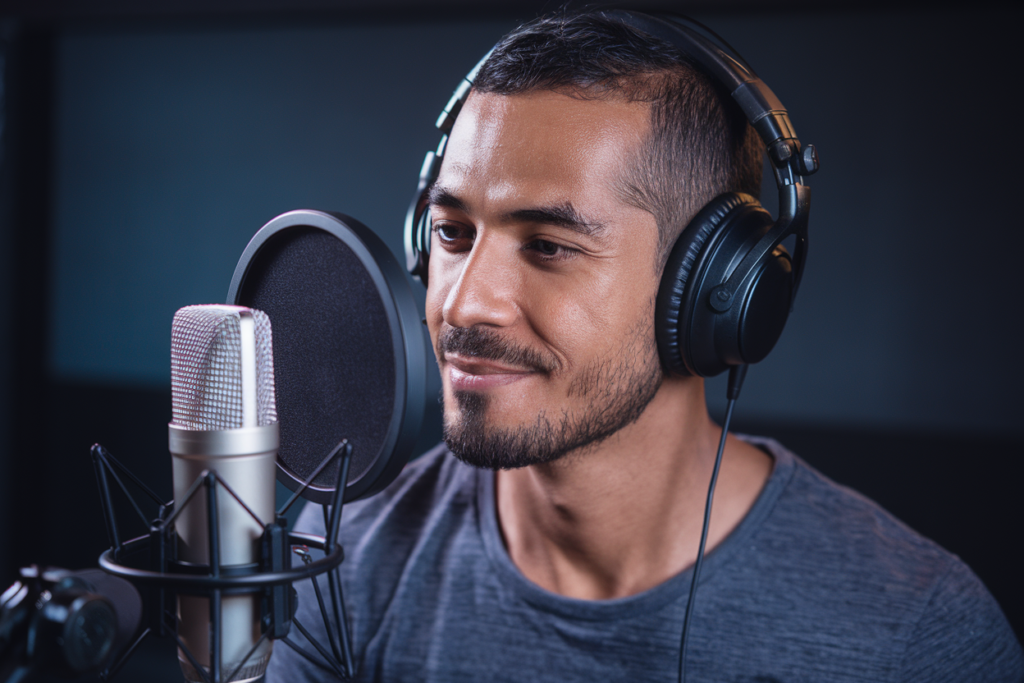Key Takeaways
- Variety of Dialects: Arabic voiceovers utilize several major dialects, including Modern Standard Arabic (MSA), Egyptian, Levantine, Gulf, and Maghrebi Arabic, each with distinct cultural nuances.
- Cultural Relevance: Choosing the appropriate dialect enhances relatability and effectiveness; for instance, Egyptian Arabic is ideal for audiences familiar with Egypt’s influential media.
- Audience Engagement: Skilled voice artists can connect emotionally with viewers through authentic delivery that reflects local pronunciation and expressions.
- Regional Variations: Subtle differences in vocabulary and pronunciation exist within dialects, impacting how content resonates across different Arab regions.
- Challenges in Talent Availability: Finding qualified voice talent fluent in specific dialects can be challenging due to varying demand and regional representation.
- Impact on Project Success: Selecting the right dialect ensures your message connects deeply with your audience while minimizing misunderstandings or disengagement.
Have you ever wondered which Arabic dialects are used in voiceovers? With the rise of media content in Arabic, understanding the nuances of different dialects can make or break your project. Whether you’re producing a film, an advertisement, or an educational video, choosing the right dialect ensures your message resonates with your audience.
Overview of Arabic Dialects
Understanding the various Arabic dialects is essential for effective voiceovers in media projects. Each dialect carries unique nuances that resonate with different audiences.
Major Arabic Dialects
Several major Arabic dialects dominate the landscape, each reflecting cultural and regional characteristics.
- Modern Standard Arabic (MSA): Used in formal settings like news broadcasts and literature, MSA serves as a common language across Arab countries.
- Egyptian Arabic: Recognized for its wide reach due to Egypt’s influential media industry, this dialect features specific vocabulary and pronunciation styles familiar to many.
- Levantine Arabic: Spoken in Lebanon, Syria, Jordan, and Palestine, Levantine presents a friendly tone suitable for casual conversations and storytelling.
- Gulf Arabic: Predominantly used in the Arabian Peninsula—especially Saudi Arabia, UAE, Kuwait—Gulf Arabic has distinct sounds that reflect local traditions.
- Maghrebi Arabic: Found in North African countries like Morocco, Algeria, and Tunisia; Maghrebi differs significantly from other dialects due to its French influence and unique expressions.
Regional Variations
Regional variations within these major dialects further enhance their diversity. You might find subtle differences even among neighboring areas:
- Vocabulary Differences: Specific words may change meaning or usage depending on the region. For instance, everyday terms can vary widely between Egyptian and Levantine speakers.
- Pronunciation Nuances: Accents differ not just by country but also by city or rural area. Such nuances impact how voice talent delivers lines authentically.
- Cultural References: Voice artists must understand local customs or idioms to create relatable content that resonates with target audiences.
Choosing the right dialect ensures your message connects deeply with viewers. Working with skilled voice actors fluent in these variations enhances engagement through culturally relevant delivery.
Importance of Dialects in Voiceovers
Understanding dialects significantly enhances the effectiveness of voiceovers. Choosing the right Arabic dialect connects your message to your audience, creating a relatable experience that resonates deeply.
Cultural Relevance
Cultural relevance plays a crucial role in voiceover projects. Each Arabic dialect carries specific cultural nuances and expressions that reflect regional identities. For instance, using Egyptian Arabic can evoke feelings of familiarity for audiences in Egypt, while Levantine Arabic might resonate better with viewers from Lebanon or Syria. A voice artist familiar with these subtleties brings authenticity to the project, ensuring that cultural references are not just accurate but also meaningful to the target audience.
Audience Engagement
Engaging an audience involves more than just delivering words; it’s about connecting emotionally. When you use a specific dialect, you tap into shared experiences and linguistic cues that make your content feel personalized. Skilled voice talents understand how intonation and pronunciation vary across regions, allowing them to deliver performances that captivate listeners. An authentic delivery encourages viewers to relate more closely to the narrative, fostering a stronger connection with your brand or message.
Commonly Used Dialects in Voiceover Industry
Understanding the various Arabic dialects plays a crucial role in selecting the right voiceover for your project. Each dialect offers unique cultural nuances that can enhance audience connection and engagement.
Egyptian Arabic
Egyptian Arabic stands out as one of the most recognized dialects across the Arab world. It’s often used in films, music, and media due to Egypt’s historical influence on Arab culture. If you’re targeting audiences from Egypt or those familiar with its pop culture, choosing a voice talent fluent in this dialect ensures authenticity. The casual, conversational tone of Egyptian Arabic makes it relatable, allowing your message to resonate effectively.
Levantine Arabic
Levantine Arabic encompasses dialects spoken in Lebanon, Syria, Jordan, and Palestine. This variety is characterized by its distinct pronunciation and expressions that reflect local cultures. A voice artist who specializes in Levantine Arabic brings warmth and familiarity to your content—ideal for projects aimed at these regions. Using this dialect not only captures attention but also creates an emotional connection with viewers who identify with its rich heritage.
Gulf Arabic
Gulf Arabic includes variations spoken in countries like Saudi Arabia, the UAE, Kuwait, Qatar, Bahrain, and Oman. This dialect reflects modernity while maintaining traditional roots—a perfect blend for contemporary media projects targeting Gulf audiences. Engaging a voice actor proficient in Gulf Arabic allows you to convey messages tailored specifically for this demographic. Its unique intonation patterns can evoke strong regional pride among listeners.
Incorporating these dialects into your voiceovers enhances relatability and effectiveness across diverse audiences. Selecting the right voice over talent skilled in these specific varieties elevates your project’s overall impact.
Challenges in Using Different Dialects
Navigating the landscape of Arabic dialects for voiceovers poses unique challenges. Understanding these hurdles can help you make informed decisions when selecting a voice artist.
Understanding and Perceptions
Perceptions of dialects vary widely among audiences. Each Arabic dialect carries cultural significance, influencing how your message is received. For example, using Egyptian Arabic might resonate with viewers who appreciate its rich cinematic history. Conversely, opting for Gulf Arabic could connect better with modern narratives aimed at younger audiences in the region. Misalignment between your content’s intended message and the chosen dialect can lead to misunderstandings or disengagement.
Availability of Voice Talent
Finding qualified voice talent fluent in specific dialects can prove difficult. The demand for skilled voice artists often outpaces supply, especially for less commonly used dialects like Maghrebi Arabic. This scarcity may limit options and increase project timelines. Moreover, not every voice actor possesses the nuances necessary to deliver authentic performances that reflect regional identities accurately. Ensuring your selected voice over talent understands local expressions and cultural contexts enhances overall effectiveness and relatability in your projects.
Understanding these challenges enables you to choose wisely when it comes to selecting an appropriate dialect for your voiceover needs, ultimately leading to more impactful media content.
Conclusion
Choosing the right Arabic dialect for voiceovers is essential in engaging your audience effectively. Each dialect offers distinct cultural and emotional connections that can enhance your media projects. Understanding these nuances helps ensure that your content resonates on a deeper level.
By selecting a dialect that aligns with your target audience’s background, you maximize relatability and authenticity. Whether it’s Egyptian Arabic for its widespread recognition or Gulf Arabic for its contemporary appeal, the right choice can elevate your project significantly.
Incorporating skilled voice talent familiar with specific dialects not only enriches the delivery but also fosters a stronger bond between viewers and your message. Embrace the diversity of Arabic dialects to create impactful voiceovers that leave a lasting impression.
Frequently Asked Questions
Why is choosing the right Arabic dialect important for voiceovers?
Selecting the appropriate Arabic dialect ensures that the content resonates with its intended audience. Each dialect carries unique cultural nuances and expressions, which enhance relatability and emotional connection. This understanding leads to more effective communication in media projects like films and advertisements.
What are the major Arabic dialects discussed in the article?
The article highlights several key Arabic dialects, including Modern Standard Arabic (MSA), Egyptian Arabic, Levantine Arabic, Gulf Arabic, and Maghrebi Arabic. Each of these reflects distinct cultural identities and regional characteristics important for voiceover work.
How does a specific dialect enhance audience engagement?
Using a specific dialect allows content to feel personalized by tapping into shared experiences and linguistic cues. Skilled voice artists adapt their intonation and pronunciation to reflect regional differences, fostering deeper emotional connections between viewers and the message or brand.
What challenges arise from using different Arabic dialects in voiceovers?
Challenges include varying perceptions of each dialect among audiences, which can affect how messages are received. Misalignment between content intent and chosen dialect may lead to misunderstandings. Additionally, finding qualified voice talent fluent in less common dialects can be difficult.
Why is Egyptian Arabic particularly significant in media projects?
Egyptian Arabic holds historical significance due to Egypt’s influential role in Arab culture and cinema. Its widespread recognition makes it relatable for many audiences familiar with Egyptian pop culture, enhancing authenticity in voiceover performances aimed at this demographic.







